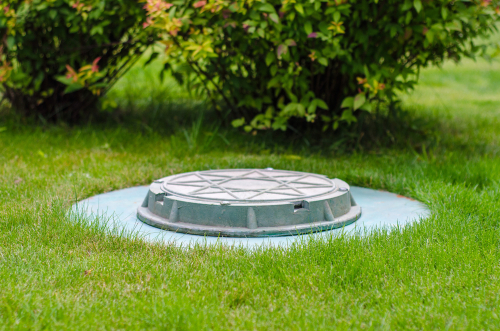
When it comes to rural living, having a reliable and efficient wastewater solution is critical. Unlike urban and suburban areas that are connected to municipal sewer systems, rural homeowners in Ohio depend on septic systems to manage wastewater safely. With different septic system types available, choosing the right one can seem overwhelming. Factors such as soil type, property size, household water usage, and local regulations all play a role in deciding what system works best. For homeowners in Brown County and surrounding regions like Clermont County and Bethel, OH, understanding your options is essential to making a cost-effective and environmentally responsible choice.
Traditional Septic Systems in Ohio
The most common septic system type in Ohio is the conventional septic tank and leach field system. This option is widely used because it is relatively straightforward and cost-effective for properties with suitable soil. The system works by directing wastewater from the home into a buried tank, where solids settle and partially decompose. The liquid effluent is then distributed into a leach field, where it percolates through the soil for natural filtration.
For rural homeowners with ample land and well-drained soil, this system is often ideal. However, Ohio’s varying soil conditions make it unsuitable in certain areas. Heavy clay soils, which are common in parts of Brown County, prevent proper drainage. If the soil cannot filter wastewater adequately, homeowners may need to consider more advanced options. It is also important to note that traditional septic systems require regular pumping every three to five years to maintain efficiency and prevent system failure.
Cost-wise, conventional systems are often less expensive than newer alternatives. Installation costs vary depending on site conditions, but they are generally lower than advanced systems. That said, repair or replacement can become costly if the soil is not a good match.
Mound vs Aeration System: Key Differences for Ohio Homeowners
For homeowners in Ohio facing soil or space challenges, mound and aeration systems are two of the most common alternatives. Both provide effective solutions for properties where traditional systems are not feasible, but they operate in very different ways.
A mound system is designed for areas with shallow soil, high water tables, or poorly draining ground. Wastewater is treated in a septic tank before being pumped into a raised sand and gravel mound. From there, the water is filtered and dispersed across the soil surface. This design makes mound systems adaptable to difficult conditions, though they require more space and ongoing maintenance. Homeowners often find the appearance of the raised mound to be a drawback, but the reliability in challenging soil conditions makes it a worthwhile option.
An aeration system, sometimes referred to as an aerobic treatment unit (ATU), adds oxygen to the wastewater treatment process. This oxygen boosts bacterial activity, breaking down solids more effectively than traditional systems. Aeration systems are compact and often suitable for smaller lots, making them ideal for rural homes where space is limited. However, they rely on electricity to run pumps and aerators, which increases both operating costs and the chance of mechanical failure.
The choice between mound vs aeration system in Ohio often comes down to soil conditions, available space, and willingness to handle maintenance. Mound systems tend to cost more upfront, while aeration systems can accumulate higher ongoing expenses due to electricity and servicing. Both are more expensive than conventional systems, but they provide flexibility for properties that would otherwise struggle with wastewater management.
Choosing What Septic System Is Best for Rural Homes in Clermont County
Clermont County is home to many rural communities, each with unique environmental factors that influence septic system design. Determining what septic system is best for rural homes in Clermont County requires careful consideration of local soil surveys and health department guidelines.
For homes with large lots and well-drained soil, conventional systems remain a cost-efficient option. However, Clermont County’s geography includes clay-heavy areas and rolling terrain, which may make traditional systems unworkable. In these situations, mound or aeration systems provide reliable alternatives.
Local health departments often provide guidance and inspections to ensure compliance with Ohio EPA standards. Homeowners must also account for water usage habits. Larger families or households with high water demand may require bigger or more advanced systems to avoid overloading. On smaller parcels of land, aeration systems are often recommended because of their compact footprint, though they may require more attention and servicing.
Ultimately, the best system balances cost, property layout, and soil conditions. A professional site evaluation is always the first step for Clermont County residents considering installation or replacement.
Costs and Considerations: Mound Septic Systems in Bethel, OH
Cost is often a major deciding factor for rural homeowners. Understanding the cost of a mound septic system in Bethel, OH, and surrounding areas helps homeowners prepare for the investment. Mound systems are generally more expensive to install than conventional septic tanks because of the additional engineering and materials required. Sand, gravel, pumps, and distribution systems all add to the expense.
In Bethel, OH, installation costs for mound systems often range significantly higher than traditional systems, sometimes reaching into the tens of thousands depending on site conditions. Homeowners should also budget for ongoing maintenance. Pumping, monitoring, and mound upkeep are all necessary to prevent costly failures. While the initial expense may seem steep, mound systems are often the only option for properties with difficult soils. Without them, wastewater cannot be managed safely or legally.
When weighing the cost of a mound septic system in Bethel, OH, homeowners should consider long-term reliability. Though pricier upfront, these systems provide a sustainable way to ensure wastewater treatment even in challenging soil conditions. They also help protect groundwater and surface water from contamination, which is an important factor for maintaining environmental health in rural areas.
Long-Term Maintenance and Environmental Impact
No matter the septic system type, maintenance is key to long-term success. Rural homeowners in Brown County and across Ohio must recognize that neglecting their system can lead to expensive repairs, environmental damage, and even health hazards.
Mound systems require regular monitoring of the pump and mound integrity, while aeration systems demand consistent electrical function and periodic servicing of mechanical parts. Conventional systems are simpler but still require routine pumping. Homeowners who overlook these needs often find themselves facing costly emergencies.
From an environmental perspective, well-maintained septic systems protect local water supplies and soil quality. Rural Ohio relies heavily on private wells for drinking water, making it critical to prevent contamination from untreated wastewater. Choosing the right system and committing to its care ensures both household safety and community health.
With increased awareness of environmental protection in Ohio, local governments have strengthened oversight of septic systems. Homeowners are encouraged to follow maintenance guidelines strictly and consult with professionals for inspections. Though maintenance may seem burdensome, it is far more affordable than replacing an entire system or addressing water contamination.
Conclusion
For rural homeowners in Brown County, Clermont County, Bethel, and beyond, understanding septic system types is essential for making an informed decision. Conventional systems offer affordability and simplicity where soil conditions allow. In more challenging areas, the comparison of mound vs aeration system in Ohio highlights two adaptable solutions, each with its own advantages and drawbacks.
Homeowners should weigh factors such as property size, soil composition, water usage, and long-term costs before committing to a system. In Bethel, OH, the cost of a mound septic system may be higher, but for many properties, it is the only reliable choice. In Clermont County, aeration systems can provide flexibility for smaller lots, while traditional systems remain a good fit for favorable soil conditions.
Ultimately, the question of what septic system is best for rural homes in Ohio does not have a one-size-fits-all answer. Each property must be evaluated individually. By considering both immediate costs and long-term maintenance, rural homeowners can choose a system that ensures safe, efficient wastewater treatment while protecting the environment for years to come.
Need Septic Contractors in Bethel, OH?
Gullett Sanitation Services, Inc. offers mobile de-watering of sludge and slurries in and around Bethel, OH, utilizing Roediger belt filter presses, as well as services and repairs on all major brands of home aeration systems. We also work with jet aeration and cleaning for sewer system lines (up to 8 inches in diameter), permits and consultation for biosolids, the transportation of non-hazardous wastewater, sludge removal from all types of waste lagoons, service and repairs on residential sewer systems, and the removal of grit, rags, and debris from anaerobic or aerobic digesters. Give us a call today and let us be your septic and dewatering service in Ohio!
